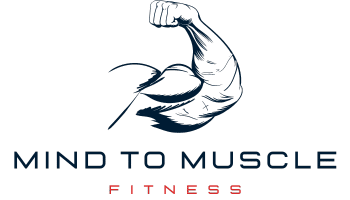
Unlocking Muscle Secrets: Does Strength Equal Size?
Did you know resting properly can boost muscle size by up to 25 percent? This fact shows how muscle growth, strength gains, and muscle definition vs size are connected. I aim to help you understand these connections. Let’s explore the secrets of building strength and muscle in a clear and supportive way.
When it comes to muscle growth, I’ve learned how our bodies respond to heavier challenges over time. It’s not just about lifting heavier weights. Muscle growth is a careful mix of activating more muscle fibers, dealing with stress, and slight muscle damage. But, you need to balance your workout intensity well to see consistent gains.
But hard work isn’t everything. Your muscles need time to rest and grow. Think of muscle as armor that protects us. By resting and using compound lifts smartly, you can keep making progress. Now, let’s adjust your training to your body’s needs for the best results and to avoid problems.
Key Takeaways
- Strategic rest periods can significantly enhance muscle size and strength.
- Balanced intensity in workouts is essential for tailored muscle growth.
- Progressive overload is the key to unlocking continuous improvement.
- Compound movements enrich overall muscle development.
- Individual exercise selection is pivotal in preventing injuries.
- Rest and recovery are as important as the training itself for muscle adaptation.
The Intriguing Relationship Between Strength and Muscle Size
Many wonder if does strength equal size? It’s complex since various aspects influence the outcome. Through my experience, I’ve learned that big muscles don’t always mean more strength. For instance, strength training methods can greatly impact results, emphasizing quality over mere bulk. Programs like the 3×5 vs 5×5 strength comparison highlight how varying volume and intensity can target strength differently without necessarily leading to significant hypertrophy. Ultimately, strength is a blend of muscle size, neural efficiency, and technique, not just how large the muscles appear.
Let’s look at muscle hypertrophy and brain-muscle connection. Muscle growth does help with getting stronger. But, if your brain can’t efficiently use those muscles, size is not enough. Simply, growing bigger muscles is only part of the story.
Statistics tell us quite a bit. Only 6 percent of adults do muscle-strengthening exercises regularly. This highlights how often we ignore strength training. This neglect can cause our muscles to weaken starting in our 30s, with a loss of 8 percent per decade after 40.
| Factor | Impact |
|---|---|
| Muscle-strengthening adherence | Only 6% of adults engage regularly |
| Muscle mass deterioration | Begins in 30s, accelerates post-40 |
| Strength training benefits | Maintains bone density, boosts metabolism, reduces body fat |
| Hypertrophy vs. Strength | High volume resistance training increases hypertrophy, not necessarily strength |
| Neuromuscular adaptations | Early stages of resistance training predominantly involve hypertrophy |
| Dietary effects | Ketogenic diet may maintain muscle strength with aging |
| Gender-specific benefits | Keto diet shows higher benefits for younger females |
The statistics aren’t just numbers. They show we need to change how we work on maximizing muscle strength. Custom resistance workouts and diets like the ketogenic plan can hugely impact our health. They improve our looks and energy levels.
As a muscle mentor, I suggest we think deeper than “size equals strength”. Focus on how muscles and nerves work together. That’s the real source of strength.

Exploring Muscle Hypertrophy: Size vs. Strength
Building a strong, defined body requires understanding different muscle growth principles. We dive into the science behind muscle growth and strength increases. This includes looking at how different training methods impact your results.
Understanding the Science of Hypertrophy
Research shows muscle size increases through specific strength training. High-load training often sees strength increase by about 10 pounds more than low-load training. However, both can lead to similar muscle growth.
This shows that muscle size and strength are not the same. It highlights the need for the right training approach to meet your goals. According to studies, those lifting heavier loads saw a bigger increase in muscle activation. Lower loads showed less improvement. This means heavier weights can make muscles more efficient with less effort.
Comparing Muscular Definition to Muscle Size
Muscle definition and size are not the same. Definition comes from sculpting muscles and lowering body fat. It reflects careful training methods, sometimes rooted in ancient techniques.
A strength-first approach is recommended. Studies show that bigger muscles don’t always mean more strength. It’s more about how effectively you can gain strength.
Strength training requires following nutritional guidelines for muscle recovery. For example, people over 50 should eat about 0.45 grams of protein per pound they weigh. Mixing high-load workouts for strength and low-load for endurance helps grow and strengthen muscles.
| Training Type | Strength Increase | Voluntary Muscle Activation Increase | Electrical Activity Change |
|---|---|---|---|
| High-Load | Approx. +10 lbs | 2.35% | Larger drop after 6 weeks |
| Low-Load | Less significant | 0.15% | Minimal change |
To boost strength, increase workout intensity gradually. Eating enough carbs and protein helps fuel your workouts and repairs muscles. Don’t forget to stay hydrated to improve recovery and performance. Not using muscles leads to quick losses in strength and size.
However, taking a break doesn’t mean all is lost. Starting training again can help regain and even boost your strength. Remember, muscle growth is about smart training, good nutrition, and our body’s ability to adapt.
Does Strength Equal Size: Insights from Strength Training Research
Strength training research shows its key role in keeping muscles strong and healthy, especially as we get older. Experts tell us how these workouts prevent conditions like osteoporosis by boosting muscle and bone. Importantly, strength training isn’t just for the young or fit; it’s vital for all ages. It helps us do everyday tasks without fear of injury or losing our independence.
There’s a big gap between how many of us do strength exercises and how many should. Just 6 percent of adults do enough strength training, even though it’s recommended twice a week. This is worrying because we lose muscle as we age—8 percent every decade after age 40. So, it’s key to keep up with strength training.
When comparing strength training to bodybuilding, they’re very different. Bodybuilding focuses on looks, using lighter weights and more reps. But strength training focuses on power and using your muscles quickly. Places like the Tufts University lab show how important the right training program is.
| Age Group | Muscle Mass Loss Over Decade | Strength Training Benefits |
|---|---|---|
| 40+ | 8% | Increases bone density, improves balance |
| 60+ | Accelerated loss | Improves mobility, reduces risk of falling |
| All Ages | Varies | Maintains independence, enhances cardiovascular fitness |
Strength training is proven effective and doesn’t need long sessions or pricey gear. Even short, 20-minute workouts can be really good for you. Following the CDC’s advice to work all major muscles twice a week shows you can gain strength and independence easily.
Here’s something to think about: strength training research shows it’s not just about strength versus bodybuilding. It’s about building lifelong health. Whether you want to be stronger for everyday life or sports, using this research can make your life better, no matter your age or fitness level.

Maximizing Your Muscle Strength Through Training Techniques
Many ask me, “does strength mean bigger muscles?” The answer is not simple. Strength training should balance muscle growth and power. This balance is key, and I’ll show you how. Let’s dive into both old and new training methods to strengthen muscles. We’ll also see how these methods fight muscle decline with age.
Techniques Adopted from Historical Strongmen
When people think of strength training, they often picture vintage strongmen. These strongmen focused not just on size but also on skill and muscle control. Today’s research supports their approach for muscle strength. Sadly, only 6 percent of adults meet strength training recommendations. Using old strongmen’s methods can help us fight muscle and bone issues as we age.
Modern Approaches to Enhancing Muscular Control
Today’s training methods mix strength with control, inspired by the past. One such method is Blood Flow Restriction (BFR) Training. BFR training strengthens muscles by causing damage at lower weights. This supports growth and meets ACSM’s protein guidelines for lifters. It also helps older adults maintain balance and agility.
Recent research shows mixing different weightlifting techniques, like straight sets and supersets, boosts muscle growth well.
| Age Group | Protein Intake for Muscle Health | Protein Intake for Weightlifters |
|---|---|---|
| General Adult Population | 0.35 grams per pound | 0.5 – 0.8 grams per pound |
| Individuals Over 50 | 0.45 grams per pound | Advisable to consult with a health professional |
| Active Weightlifters | Varies based on activity level | 0.5 – 0.8 grams per pound |
Eating right and staying hydrated is as important as training. Focus on protein for muscle and carbs for energy. I’m here to help you learn these principles. They will not only increase your muscle size but also improve your strength and overall health.
Strength Training vs Bodybuilding: Tailoring Your Workout for Goals
It’s essential to know the difference between strength training vs bodybuilding when making fitness goals. Each has a huge impact on your training results. You might be aiming for strength gains or want to grow your muscles big. Let’s explore the key contrasts between these fitness approaches.
A study looked at resistance training and nutrition’s role in muscle and strength growth. It involved 60 prostate cancer patients. They were split into groups. 30 did resistance exercise and took whey protein, while the other 30 got a placebo. The study shows both exercise and nutrition are crucial for muscle growth.
This research found that all exercise groups saw an increase in muscle and strength. However, the group without extra protein didn’t gain fat. Even with added protein, their fitness levels stayed about the same. This indicates that protein helps build muscle but doesn’t necessarily boost overall strength.
| Parameter | Resistance + Protein | Resistance + Placebo | Control Group |
|---|---|---|---|
| Muscle Mass & Strength | Increased | Increased | Decreased |
| Total Fat Mass & Percentage | Increased | Not Increased | Increased |
| Physical Performance | No Significant Change | No Significant Change | N/A |
| Aerobic Capacity | Decreased | Maintained | Decreased |
| Protein Intake | Averaged >1.0 g/kg/day | Averaged >1.0 g/kg/day | Averaged >1.0 g/kg/day |
When building muscle, set your workout goals wisely. If you want functional strength, focus on many sets and increasing weight. But if you’re into bodybuilding, hone in on lifting volume and targeting specific muscles. Remember, strength training and bodybuilding guide you towards different fitness achievements.
Connection between muscle size and strength
The connection between muscle size and strength is complex. Research by Ikegawa et al. shows muscle force relates to the pennation angle in athletes. This means the way muscle fibers angle impacts strength from size.
Getting bigger muscles doesn’t guarantee getting stronger. Loenneke JP and others discovered that changes in muscle size don’t always mean changes in strength. This info is vital for those focusing on strength, showing the need for training that boosts neural changes, not just size.
Here’s something interesting: six weeks of intense training mainly causes sarcoplasmic hypertrophy in young men, says Haun CT et al. This type of growth increases the fluid around muscle fibers, not the fibers themselves. Understanding this helps tailor training for size increases without necessarily gaining strength.
Start the gym now to see results fast
If you’re new to strength training, you’re in for good news. Brook MS and their team found that muscle growth is quick at the start. This quick response means your hard work will show results fast, aligning with muscle protein synthesis boosts.
| Statistic | Insight | Implication for Training |
|---|---|---|
| Ikegawa et al. 2008 | Lower muscle force per increased pennation angle | Focus on exercises that enhance muscle fiber alignment and tension generation |
| Loenneke JP et al. 2019 | Muscle size change does not dictate strength change | Implement strength-specific protocols alongside hypertrophy training |
| Haun CT et al. 2019 | Mainly sarcoplasmic hypertrophy from high-volume training | Balanced training emphasizing both sarcoplasmic and myofibrillar growth |
| Brook MS et al. 2015 | Hypertrophy adapts early in training | Encourage beginners with the quick visual and strength gains |
Improving muscle and strength isn’t just about lifting heavier weights. For example, Nielsen JL et al. show that training can be effective without maxing out with techniques like low-load resistance and restricted blood flow. This method helps even those recovering or wanting lighter workouts to see gains.
Knowing how the body reacts to different training is crucial. Whether it’s weekly testosterone shots, as Fitts RH et al. discuss, or studying androgen therapy’s effects by Lamboley CR et al., each study gives us tips for better workouts.
Though researching muscle science seems tough, it guides our fitness journey. With this knowledge, we make smarter choices for gaining not just muscle, but also strength and health. Let’s use these insights to reach our fitness goals.
Conclusion
Understanding muscle growth is complex. It’s not just about size. The 2008 research by Ikegawa S shows something interesting. Muscle strength is affected by how muscles are angled, not just their size. This means we should focus on how muscles are shaped and work, not just making them bigger.
Getting stronger muscles involves more than just growing them. Initial training changes were found important by Haun CT in 2019. Yet, Loenneke JP in 2019 pointed out these size changes don’t always mean stronger muscles. This info helps us aim for workouts that build useful strength. This kind of strength helps us stay young, as seen in studies about grip strength and aging.
Combining old and new ways of training can benefit everyone. Vissing K’s 2020 work talks about the benefits of training with light weights. It’s effective for people of any age or gender, says Ahtiainen JP in 2016. This way, we create workout plans that improve our health and muscle strength. Let’s focus on strength training to better our fitness journey.
FAQ
Does greater muscle size always mean more strength?
Having bigger muscles doesn’t mean you’re always stronger. Strength also comes from how well you use your muscles.
What is muscle hypertrophy and how is it achieved?
Muscle hypertrophy makes muscles bigger through exercises like weightlifting. When muscles repair after training, they grow thicker and stronger.
What is the difference between muscular definition and muscle size?
Muscular definition shows muscle shapes and is improved by lowering body fat and focusing on muscle control. Muscle size is about how much muscle you have, grown through hypertrophy.
Can I become stronger without significantly increasing my muscle size?
Yes, getting stronger without big muscles is possible. It’s about using your muscles better, not making them much bigger.
How do strength training and bodybuilding differ?
Strength training boosts muscle function. Bodybuilding increases muscle size for a toned look. Their workouts and goals are different.
What training techniques can I use to maximize muscle strength?
To boost muscle strength, use techniques like progressive overload and multi-set training. Also, focus on muscle control and the mind-muscle link. BFR Training is another method to gain strength.
How do historical strongmen techniques contribute to today’s strength training?
Old strongmen skills that focus on muscle control and mental focus now help with muscle coordination and strength in modern training.
What are modern approaches to enhancing muscular control?
New methods like BFR Training and functional movement exercises improve muscle control. They use low-impact resistance with specific movements.



